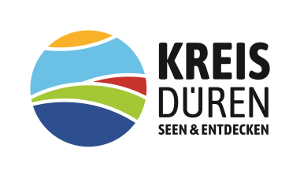Via Belgica
The imperial roads were the main arteries of the Roman Empire: over 100,000 kilometers, the solidly constructed road network made it possible to transport people, news and trade goods from all over the world across rivers, mountains and cultural borders. Set out to discover the Roman Road Experience and embark on a journey through time along the Roman highway Via Belgica.
The Romans laid out the imperial road from Cologne to Boulogne-sur-Mer on the English Channel (Portus Britannicus) in a straight line wherever the terrain allowed. The straight Aachener Straße leads out of Cologne. The Roman burial chamber in Weiden is a highlight along the way. In the forest near Frechen-Königsdorf, the Roman road embankment has been preserved for kilometers. After the climb to the Ville, the route continues flat via Elsdorf and Niederzier, although today the Hambach open-cast mine has to be bypassed. The milestone station at Sophienhöhe allows for a break, then Jülich awaits with its famous citadel. The Citadel Museum provides information about the Roman road with the modern name "Via Belgica". After several kilometers through the fields near Aldenhoven and Baesweiler, you finally reach Übach-Palenberg on the hilly border with the Netherlands. Here it is worth making a detour to Rode Castle in Herzogenrath. Take your time and experience the 93 km between Cologne and Übach-Palenberg in a total of 3 day stages. This gives you enough time to explore the archaeological monuments along the route as well as visit the sights in the surrounding area.
Suggested stages:
Stage 1: Cologne - Quadrath-Ichendorf
Stage 2: Quadrath-Ichendorf - Jülich
Stage 3: Jülich - Übach-Palenberg






















